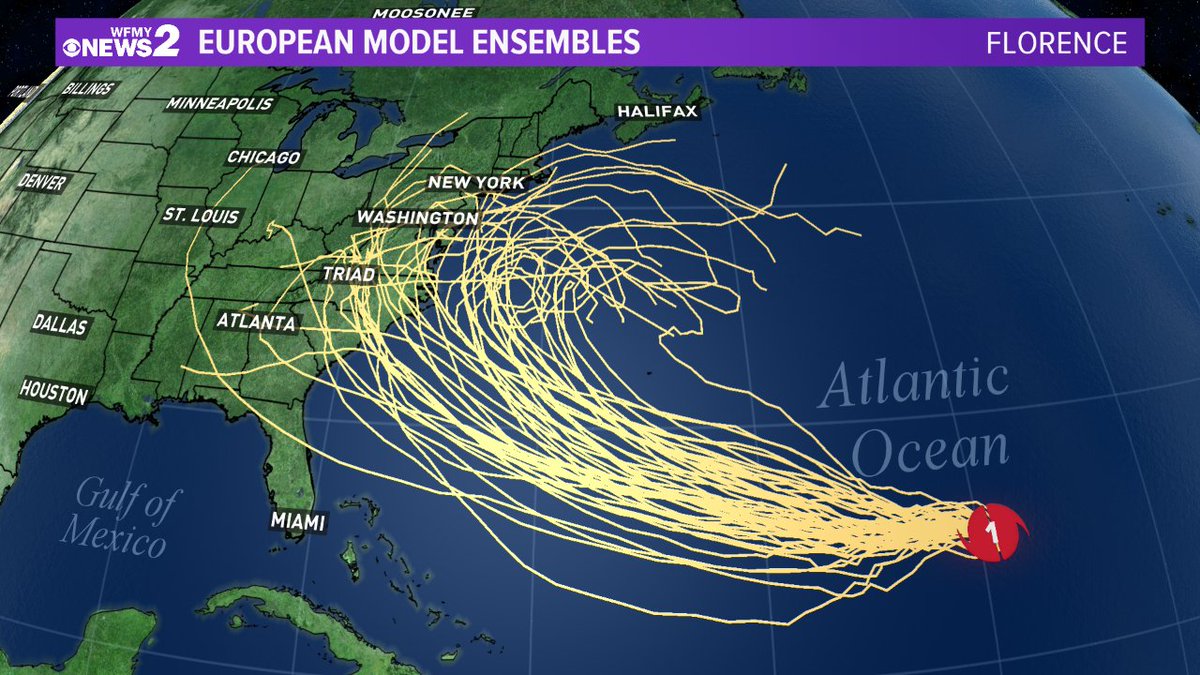Spaghetti Models in Meteorology

Spaghetti models are a collection of multiple weather forecast models, each representing a possible weather outcome. They are used in weather forecasting to visualize the range of possible weather conditions and the uncertainty associated with the forecast.
Spaghetti models are ensemble forecasts that show the possible paths of a hurricane. For example, the hurricane beryl forecast shows spaghetti models that indicate the storm could make landfall anywhere from Florida to North Carolina. Spaghetti models are helpful for understanding the potential risks associated with a hurricane, but it is important to remember that they are just one tool and should not be used as the sole basis for making decisions.
Different Spaghetti Models
There are several different spaghetti models used in weather forecasting, each with its strengths and weaknesses:
- The Global Forecast System (GFS) is a global model that provides forecasts for the entire globe. It is one of the most widely used spaghetti models and is known for its accuracy in predicting large-scale weather patterns.
- The European Centre for Medium-Range Weather Forecasts (ECMWF) model is another global model that is known for its accuracy in predicting medium-range weather forecasts (up to 10 days).
- The National Weather Service (NWS) North American Mesoscale (NAM) model is a regional model that provides forecasts for North America. It is known for its accuracy in predicting short-range weather forecasts (up to 5 days).
Limitations and Challenges
While spaghetti models are a valuable tool for weather forecasting, they also have some limitations and challenges:
- Uncertainty: Spaghetti models represent a range of possible weather outcomes, but they do not provide a definitive forecast. This uncertainty can make it difficult to make decisions based on the forecast.
- Computational cost: Running spaghetti models is computationally expensive, which can limit the number of models that can be run and the frequency with which they can be updated.
- Interpretation: Spaghetti models can be difficult to interpret, especially for non-meteorologists. This can make it difficult to communicate the forecast to the public.
Applications of Spaghetti Models

Beyond weather forecasting, spaghetti models find practical applications in various fields.
Risk Assessment
Spaghetti models are used to assess risks associated with:
- Natural disasters (e.g., hurricanes, floods)
- Financial markets (e.g., stock market volatility)
- Health epidemics (e.g., disease spread)
Decision-Making, Spaghetti models
Spaghetti models aid in decision-making by providing:
- Multiple scenarios for evaluating potential outcomes
- Identification of risks and opportunities
- Quantification of uncertainties
Case Studies
Examples of successful applications include:
- Risk assessment for Hurricane Katrina evacuation planning
- Financial modeling for risk management in the banking industry
- Disease modeling for predicting the spread of influenza
Spaghetti Models vs. Ensemble Forecasting

Spaghetti models and ensemble forecasting are both techniques used in meteorology to predict the weather. However, there are some key differences between the two approaches.
Spaghetti models involve running a single weather model multiple times, each time with slightly different initial conditions. The resulting ensemble of forecasts is then used to create a spaghetti plot, which shows the range of possible outcomes.
Ensemble forecasting, on the other hand, involves running multiple different weather models, each with its own set of initial conditions. The resulting ensemble of forecasts is then used to create a probability forecast, which shows the likelihood of different weather outcomes.
Advantages and Disadvantages
Spaghetti models are relatively simple to run, and they can be used to generate forecasts for a wide range of weather phenomena. However, spaghetti models can be sensitive to small changes in initial conditions, and they can sometimes produce unrealistic forecasts.
Ensemble forecasting is more computationally expensive than spaghetti modeling, but it can produce more accurate forecasts. Ensemble forecasting is also less sensitive to small changes in initial conditions, and it can be used to generate forecasts for a wider range of weather phenomena.
Table of Key Differences
| Feature | Spaghetti Models | Ensemble Forecasting |
|---|---|---|
| Number of models | 1 | Multiple |
| Initial conditions | Slightly different | Different |
| Output | Spaghetti plot | Probability forecast |
| Computational cost | Low | High |
| Accuracy | Moderate | High |
Spaghetti models, also known as ensemble forecasts, provide a range of possible storm tracks. To illustrate their usefulness, let’s consider storm beryl path. Spaghetti models show multiple potential paths, allowing forecasters to assess the likelihood of different scenarios. This information is crucial for emergency preparedness and decision-making.